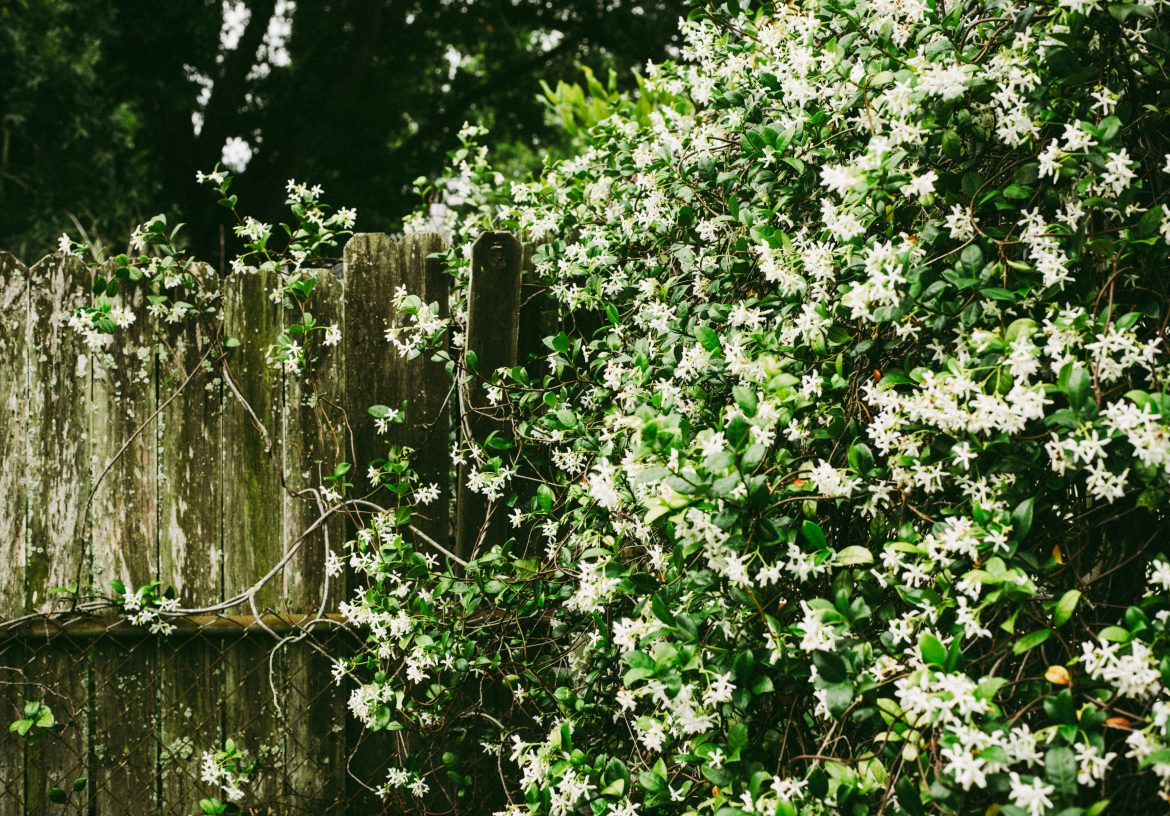Jasmine is one of those rare garden plants that offers both beauty and practicality. With its delicate star-shaped flowers and intoxicating scent, jasmine adds a romantic, almost old-world charm to any garden. But when trained correctly, it also forms a dense, vigorous hedge, perfect for screening out neighbours or softening the edges of a fence or wall. Here’s how to grow a jasmine hedge.
ALSO SEE: How to add privacy to your home on a budget: easy and affordable solutions that work
Choosing the right jasmine variety for your space
While most people associate jasmine with climbing vines, not all types are created equal when it comes to hedging. Jasminum officinale is a popular deciduous variety known for its resilience and sweetly scented white blooms. It handles pruning well, which is vital when trying to shape a formal or semi-formal hedge. Jasminum polyanthum, on the other hand, is a subtropical evergreen with pink buds that open into fragrant white flowers. It grows aggressively and makes an excellent informal screen, especially in warmer regions.
If you’re gardening in a colder climate, look to hardier varieties like Jasminum nudiflorum (winter jasmine), though it tends to grow more loosely and may need regular training and support to maintain a hedge shape.
When and where to plant jasmine
Timing is key when planting jasmine. The best time to get your hedge in the ground is either in spring or autumn when the soil is still warm, but the weather is mild enough to reduce transplant stress. Choose a site with full sun to partial shade, most jasmine varieties bloom more prolifically with at least six hours of sunlight per day.
Good drainage is essential. Jasmine doesn’t like soggy roots, so avoid planting in low-lying areas where water tends to pool. If your soil is heavy, amend it with compost and a bit of grit to improve structure. You should also space your plants approximately 60 to 90 cm apart to give them room to grow while still ensuring a full, lush hedge in a season or two.
How to train jasmine into a hedge
Unlike box or privet, jasmine doesn’t naturally grow into a dense hedge shape, so training is essential. Start by placing a trellis, wire fencing, or another form of support behind your planting row. As your jasmine plants grow, gently guide and tie new shoots to the support to encourage horizontal spread and upright growth.
Pruning is also vital, especially in the first two years. Don’t be afraid to cut your jasmine back hard after flowering. This not only encourages bushier growth but also keeps the hedge neat and prevents it from getting too leggy. Once the main structure is established, you can maintain it with light pruning after each flush of blooms.
Watering, feeding, and ongoing care
Young jasmine hedges need consistent watering during their first year, especially in dry weather. Water deeply once a week rather than giving them a light sprinkle; this helps encourage deep root growth. Once established, most jasmine varieties are fairly drought-tolerant, though they will flower more generously with occasional watering during dry spells.
Feeding your hedge with a balanced fertiliser in early spring will encourage both leafy growth and blooms. Too much nitrogen can lead to excessive greenery at the expense of flowers, so stick to something with a balanced NPK ratio or a product formulated for flowering climbers.
Common pests and problems
Jasmine is relatively low-maintenance, but it can be susceptible to aphids, spider mites, and whiteflies, especially during hot, dry spells. Keep an eye out for discoloured or curled leaves and treat infestations early with an insecticidal soap or neem oil spray.
Powdery mildew can also be a problem in humid, shaded conditions. Make sure there’s good airflow around the base of your plants and avoid wetting the foliage when watering to reduce the risk.
A hedge that grows with you
A jasmine hedge isn’t just a beautiful garden feature, it’s a living, breathing boundary that gets better with time. With the right care and a little early effort, jasmine will reward you with thick green coverage and waves of flowers each season. Whether you want to create a secluded garden nook or simply add a touch of classic charm to your landscape, jasmine is an elegant, enduring choice.
ALSO SEE:
How to grow citrus trees indoors and keep them thriving year-round
Featured Image: Pexels

